Road Bike Geometry Explained
Road bike geometry has a major impact on the way a bike handles as well as the riding position. Here we explain the most important geometry numbers, what they are and what they mean. This will help you to better understand the geometry tables of the bikes that you are interested in.
Top Tube
Top tube length is the horizontal measurement from the steerer tube to the seatpost.
Sportives bikes have shorter top tubes than race bikes.
A size medium sportive bike may have 545mm top tube while an equivalent road race bike will be 5mm – 10mm longer.
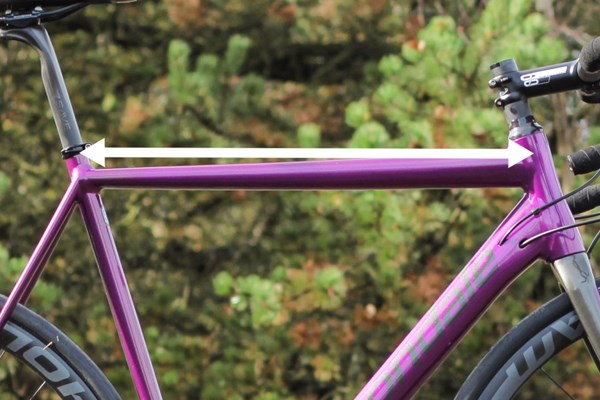
Reach
Reach is the horizontal measurement, that goes from the steerer to the point directly above the bottom bracket. This affects how ‘long’ a bike feels in the riding position.
As with top tube, reach measurements will be longer on a race bike compared to a sportive bike.
You can adjust the reach on a road bike by fitting a shorter or longer stem.
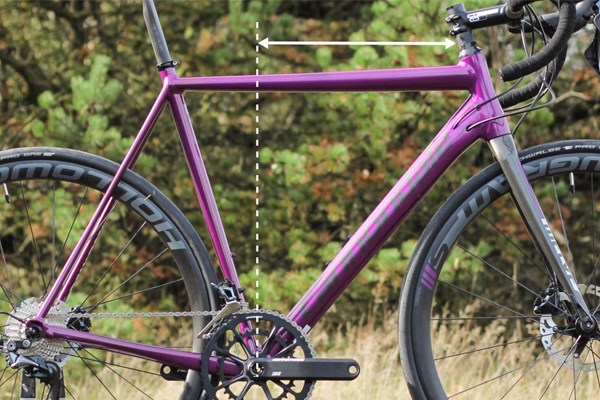
Stack
Stack is the vertical distance from the bottom bracket to the steerer. This is how ‘tall’ the bike feels.
Stack height can be adjusted slightly by re-positioning the spacers around the stem. This will increase or decrease the effective stack height.

Head Tube Length
Head tube length is measured from the bottom of the head tube to the top. A longer head tube offers a more upright riding position while a shorter one offers more tucked position.
A size medium aero road bike may have a head tube length of about 145mm. An equivalent road race bike will be 2mm-5mm longer while a sportive bike will be between 10mm and 20mm longer.
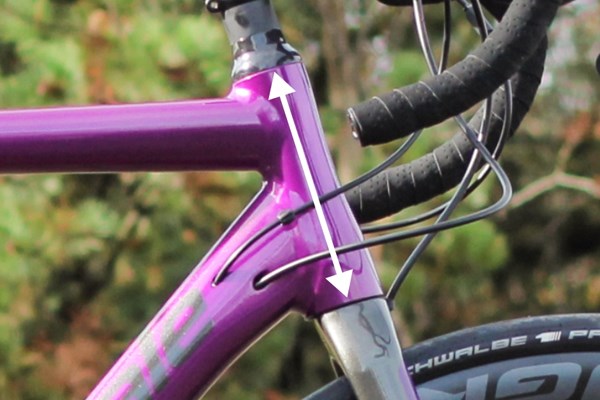
Head Angle
Head tube angle is the angle between the fork and the ground. A slack head angle will make the bike more stable, while a steep one will make the bike nimbler.
A typical head angle for a road race bike is 73°. Sportive bikes tend to have slightly slacker 72° head angle .
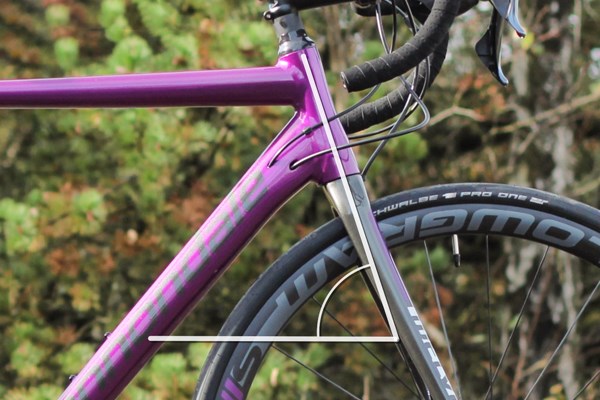
Fork Rake
Fork rake or offset is the difference between the line that follows the head angle to the ground and a vertical line that runs through the front axle. A larger rake makes the steering faster while a smaller one gives you more stable handling.
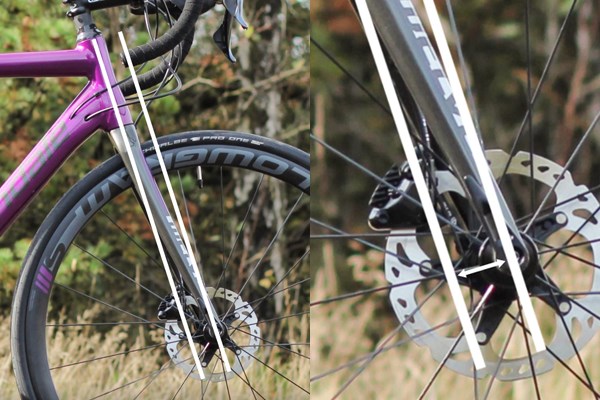
Trail
Trail is the amount that the tyre contact patch sits behind the steering axis. Less trail equals faster steering while more trail gives you more stability.
Trail, rake and head angle all work together to influence the steering properties of the bike.
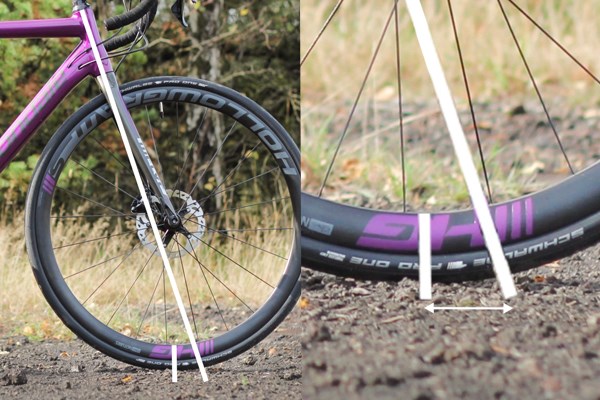
Bottom Bracket Drop
Bottom bracket drop is the vertical distance from the wheel axles to the bottom bracket. More bottom bracket drop lowers the centre of gravity which makes the bike feel more stable but will also make your pedals sit closer to the ground.
Sportive bikes tend to have more of a bottom bracket drop than the 65mm typically found on road race bikes.
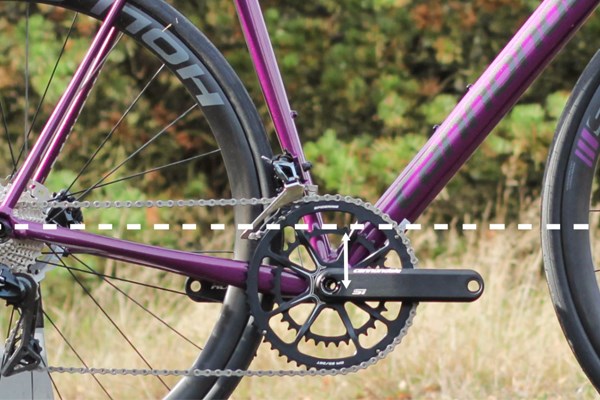
Seat Tube Angle
Seat tube angle is the measurement of the seat tube angle relative to the ground. You can adjust the effective seat tube angle by moving the saddle backward or forward on the rails to get your perfect cycling position.
A 73° seat tube angle is typical on all types of road bike
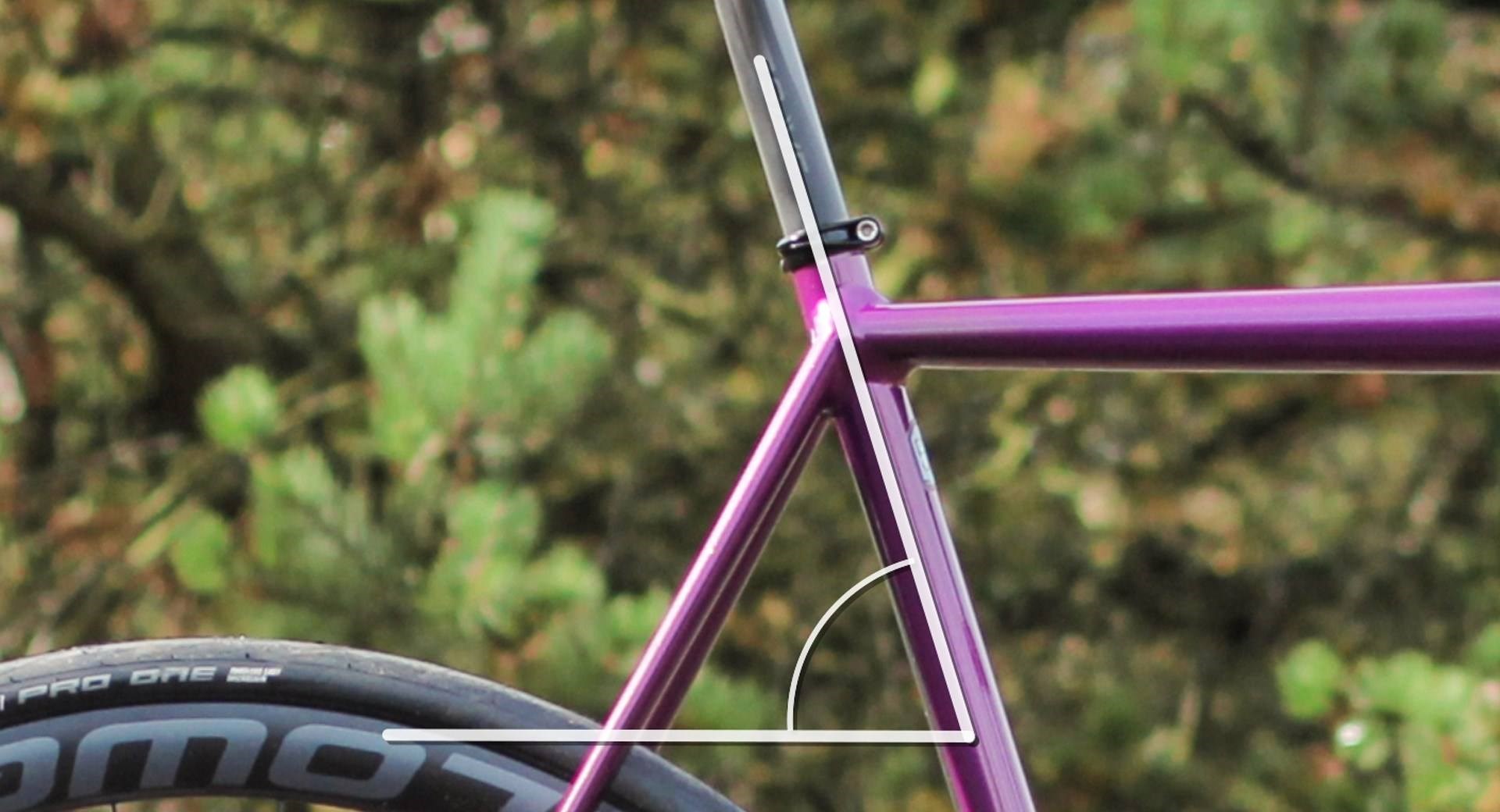
Chainstay Length
Chainstay length is distance from the BB to the rear axle. Longer chainstays improve stability while shorter ones give you sharper handling.
Road race bikes have the shortest chainstays at around 405mm. Sportive bikes will be 10mm – 20mm longer. This improves stability and allows for increased tyre clearance.

Wheelbase
Wheelbase is the length of the bike from axle to axle. Longer bikes tend to be more stable while shorter ones are nimbler.
Depending on size, a sportive bike will be around 10mm – 30mm longer than a road race bike.
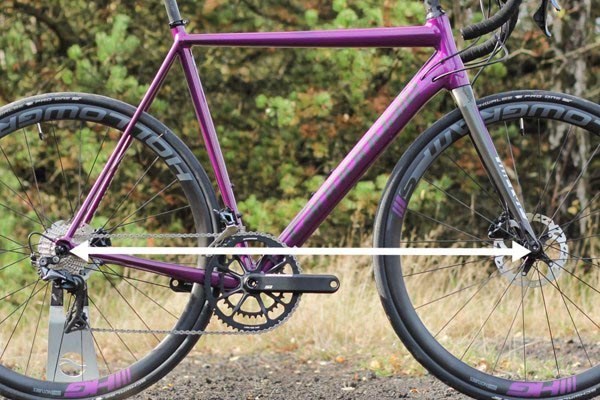
Standover Height
Standover height is the distance between the ground and the top tube, at the point where you would naturally stand astride the bike.
Bikes with compact geometry, like Giants, have sloping top tubes which offer a lower stand over height.
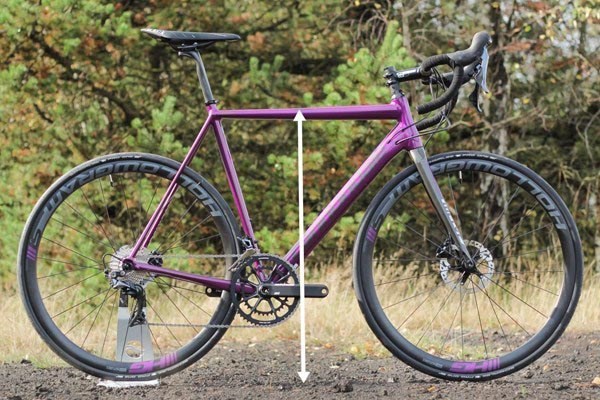
Geometry tables often include other geometry numbers as well, but these are the most important ones you need to look at when choosing your new road bike.